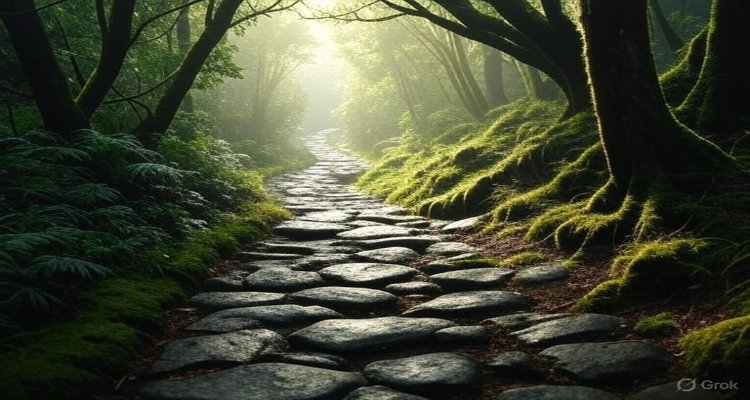The Ancient Paths Walked Only in Silence
Discover the mystery of ancient pilgrimage routes where silence was sacred. Explore their cultural meaning, spiritual depth, and enduring legacy.
Introduction: Roads Where Words Were Forbidden
Not all journeys were meant for chatter. Across the ancient world, there existed paths where travelers walked without uttering a word—routes carved not only into the earth but into the spiritual consciousness of civilizations. These were the silent paths, sacred trails that demanded stillness, reflection, and reverence. Unlike bustling trade routes or war marches, these journeys were defined by absence—the absence of speech.
Context & Background: Why Silence Mattered
In many traditions, silence was more than the lack of sound; it was a form of communication with the divine. Ancient cultures—whether in Greece, India, or the Americas—believed that words could pollute sacred energy. Silence, by contrast, opened the mind and heart to deeper awareness.
Some of the best-known examples include:
- The Eleusinian Mysteries (Greece): Initiates walked in silence toward the sanctuary of Demeter, where speaking could break the ritual.
- Buddhist Pilgrimage Routes (Asia): Monks often practiced “noble silence” while trekking to sacred shrines.
- Native American Vision Quests: Paths into the wilderness were walked in quiet, allowing spiritual messages to be heard.
Silence, therefore, was not imposed—it was chosen. It transformed walking into meditation, travel into transcendence.
Main Developments: The Ritual of Quiet Travel
Unlike common roads that connected cities or markets, silent paths connected people to the sacred. Archaeological evidence suggests that designated silent routes often led to temples, mountains, or caves considered portals to other realms.
Historians describe how these journeys worked:
- No Conversation Allowed: Breaking silence could mean exclusion from the ritual or dishonor.
- Physical and Spiritual Cleansing: Pilgrims often fasted or bathed before beginning.
- Communal Yet Individual: Groups walked together, yet each traveler was locked in their own interior dialogue.
In medieval Europe, parts of the Camino de Santiago were observed in silence, especially near shrines. In Japan, sections of the Kumano Kodo trail were also walked wordlessly. These practices reflected a universal belief—that sacred spaces required quiet entry.
Expert Insight & Public Reaction
Dr. Elena Markou, an archaeologist specializing in sacred landscapes, explains:
“Silent paths reveal that ancient people understood something modern society often forgets—that silence sharpens awareness. When you strip away noise, every step, every breath, every detail of nature becomes magnified.”
Modern pilgrims and hikers, too, report profound effects. Online communities dedicated to “silent hiking” describe feelings of mental clarity and heightened connection to the environment. One participant noted, “It’s as if the forest speaks louder when you’re quiet enough to listen.”
Impact & Implications: Silence in a Noisy World
In today’s age of constant notifications and endless conversations, the idea of walking in silence feels radical. Yet, psychologists suggest it may be more relevant than ever. Studies link silent retreats to lower stress, improved focus, and even greater empathy.
Tourism boards in places like Spain, Japan, and India now highlight heritage silence routes as spiritual experiences for modern travelers. These aren’t re-enactments of history but living traditions that remind us of the human need for reflection.
Who benefits?
- Travelers: Gain mental peace and cultural insight.
- Local Communities: Preserve traditions and attract respectful tourism.
- Society at Large: Rediscovers the value of quiet in an overstimulated world.
Conclusion: The Road Ahead for Silent Journeys
The ancient paths walked only in silence were more than physical trails; they were invitations to journey inward. Their quiet footsteps still echo today, reminding us that silence is not emptiness but presence. As modern life grows noisier, perhaps it is time to revisit these forgotten traditions—not to escape the world, but to hear it more clearly.
Disclaimer : This article is for educational and cultural exploration purposes. Historical references are based on research and oral traditions; practices may vary by culture and interpretation.











